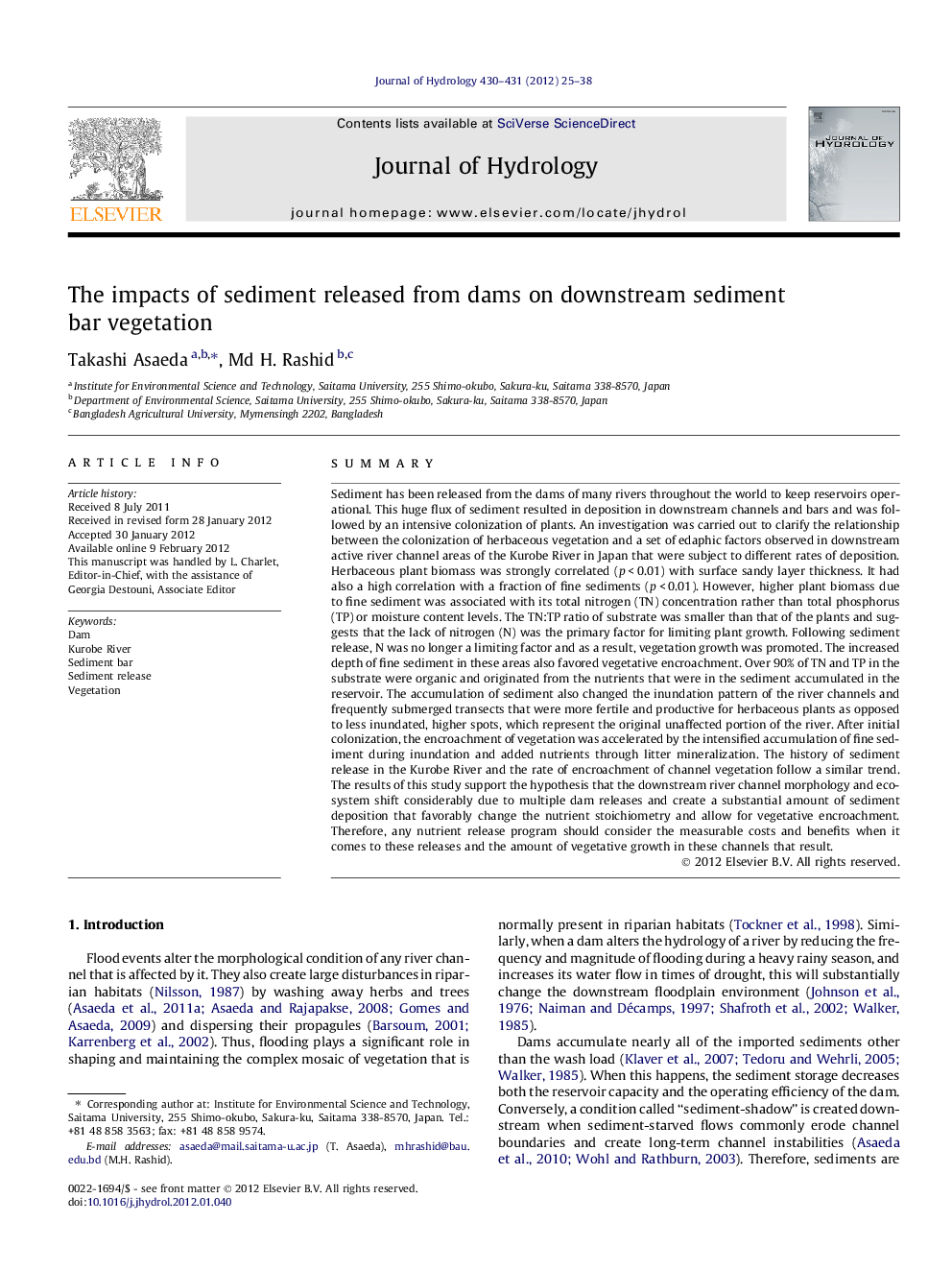| کد مقاله | کد نشریه | سال انتشار | مقاله انگلیسی | نسخه تمام متن |
|---|---|---|---|---|
| 4577058 | 1629996 | 2012 | 14 صفحه PDF | دانلود رایگان |

SummarySediment has been released from the dams of many rivers throughout the world to keep reservoirs operational. This huge flux of sediment resulted in deposition in downstream channels and bars and was followed by an intensive colonization of plants. An investigation was carried out to clarify the relationship between the colonization of herbaceous vegetation and a set of edaphic factors observed in downstream active river channel areas of the Kurobe River in Japan that were subject to different rates of deposition. Herbaceous plant biomass was strongly correlated (p < 0.01) with surface sandy layer thickness. It had also a high correlation with a fraction of fine sediments (p < 0.01). However, higher plant biomass due to fine sediment was associated with its total nitrogen (TN) concentration rather than total phosphorus (TP) or moisture content levels. The TN:TP ratio of substrate was smaller than that of the plants and suggests that the lack of nitrogen (N) was the primary factor for limiting plant growth. Following sediment release, N was no longer a limiting factor and as a result, vegetation growth was promoted. The increased depth of fine sediment in these areas also favored vegetative encroachment. Over 90% of TN and TP in the substrate were organic and originated from the nutrients that were in the sediment accumulated in the reservoir. The accumulation of sediment also changed the inundation pattern of the river channels and frequently submerged transects that were more fertile and productive for herbaceous plants as opposed to less inundated, higher spots, which represent the original unaffected portion of the river. After initial colonization, the encroachment of vegetation was accelerated by the intensified accumulation of fine sediment during inundation and added nutrients through litter mineralization. The history of sediment release in the Kurobe River and the rate of encroachment of channel vegetation follow a similar trend. The results of this study support the hypothesis that the downstream river channel morphology and ecosystem shift considerably due to multiple dam releases and create a substantial amount of sediment deposition that favorably change the nutrient stoichiometry and allow for vegetative encroachment. Therefore, any nutrient release program should consider the measurable costs and benefits when it comes to these releases and the amount of vegetative growth in these channels that result.
► Stony floodplain of a regulated river is nitrogen (N) limited.
► Nutrient enrichment of substrate after sediment release promotes vegetation.
► Most of N and P in accumulated sediment originates from reservoir sediment.
► Sediment release changes inundation regime of channels in favor of vegetation.
► Channel vegetation should be considered before initiating sediment release.
Journal: Journal of Hydrology - Volumes 430–431, 2 April 2012, Pages 25–38